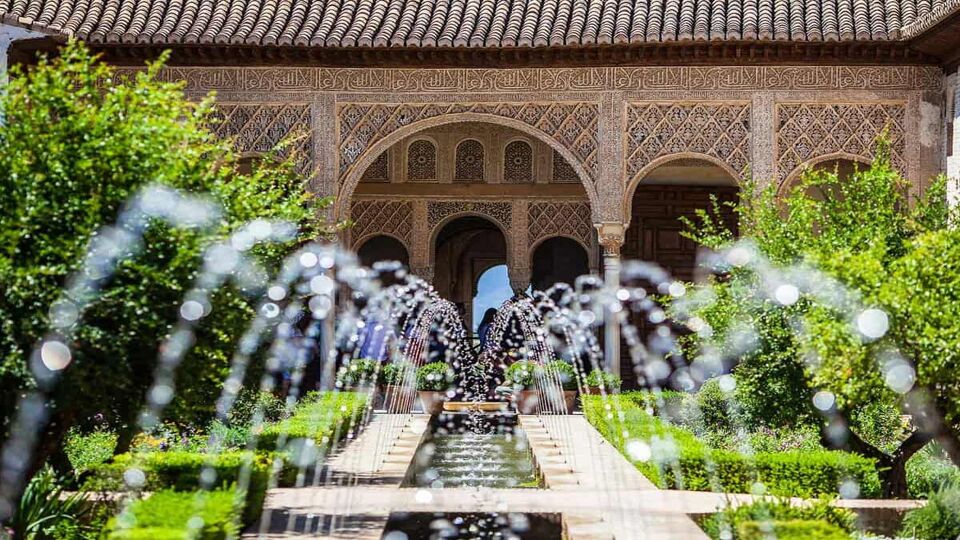Granada
Price €49
Min age 9
Rating 4.97 / 5 [519 ratings]
Tour supplied by:
Bucket list destination:
Granada, Andalusia, Spain

Magnificently set under the tallest mountains in Spain, Granada, capital of the Nasrid kings and the last stand of the Moors in Spain, is a city with a fairytale aura, crowned by the incomparable hilltop citadel and gardens of the Alhambra.
Granada’s conquerors in 1492, Ferdinand II of Aragon and Isabella I of Castile, lie in the ornate Royal Chapel, one of the many monuments in the city below.
With its large university, 21st-century Granada has a youthful bohemian buzz and a multicultural feel, as it rediscovers its Jewish and Moorish past.
The magnificent National Park of the Sierra Nevada is on the city’s doorstep.
The heart of Granada has two hills split by the river Darro, one topped by the Alhambra, the other by the historic Arab quarter of the Albayzin, with Sacromonte and its famous flamenco caves just east.
The narrow streets of old Granada surround the cathedral, while just east was the Jewish quarter, demolished in 1492 and renamed El Realejo by the Catholic kings. Modern Granada radiates out north and south.
Our selection of the best Viator tours of this destination, plus helpful tickets and transfers
Granada
Price €49
Min age 9
Rating 4.97 / 5 [519 ratings]
Tour supplied by:
Granada
Price €25
Min age 1
Rating 4.74 / 5 [500 ratings]
Tour supplied by:
Granada
Price €19
Min age 0
Rating 4.80 / 5 [337 ratings]
Tour supplied by:
Granada
Price €49
Min age 9
Rating 4.90 / 5 [330 ratings]
Tour supplied by:
Granada
Price €45
Min age 19
Rating 4.56 / 5 [192 ratings]
Tour supplied by:
Peak season is spring, with Holy Week (Semana Santa) and other fiestas: Christmas is another busy time. The city can roast in July and August; if you go then, take a long afternoon siesta.
Autumn is lovely and warm; January and February are quiet, and can be rainy, but offer a good chance to feel like a local.
Granada’s small airport is 12km west of the city. Alsa buses meet each flight, and have numerous stops in the city. There are a dozen daily direct buses from Malaga airport to Granada (two hours) that stop at the bus station out of town, where you can pick up a taxi.
Traffic is limited in the centre around the cathedral, where all points of interest are easily accessible by foot. Buses will take you up the hilly bits (bus C30 goes to the Alhambra, bus C31 to the Albayzin, while C32 links both) and taxis are plentiful.
Numerous places rent out bikes and e-bikes for getting around on your own steam, but take care in the busy streets of the modern city.
It’s atmospheric and peaceful at night by the Alhambra, even if you’ll have to take the bus or taxis to get around, or face a long walk uphill. The Albayzin quarter looking across at the Alhambra is rife with stylish boutique hotels with beautiful views, near some of the liveliest bars and restaurants.
Staying around the Darro river, between the two hills is also good and convenient for the nightlife; the historic centre around the Royal Chapel is another good bet.
The big hotels in the modern city that host coach parties are less interesting.
Plaza Bibrambla by the Cathedral, Plaza Nueva and Calle Elvira are the social centres of Granada, where everyone stops for a drink and a nibble (it’s one of the towns where they often give out free tapas).
University students hang out in the bars on Calle Pedro Antonio, and atmospheric tapas bars wait in the plazas of Albayzin and along the Carrera del Darro. Look for Moroccan-style tea rooms along Calle Calderia Nueva.
For souvenirs, spices and crafts, visit the remnants of the once great silk bazaar along Calle Alcaiceria (but beware pickpockets!). All the big Spanish fashion brands can be found along Calle Reyes Catolicos and Calle Recogidas. If you’re serious about tiles, visit the Fajalauza factory up in Albaycin.
The Sunday morning Mercadillo de Antiguedades de Almunecar in Paseo Blas Infante is the place to look for antiques.
Look for traditional crafts: taracea (wooden inlays), ajalauza (hand painted blue and green ceramics), jarapas (hand-woven rugs from the Alpujarras) and farolas (stained-glass lamps), silks and ethnic fabrics.